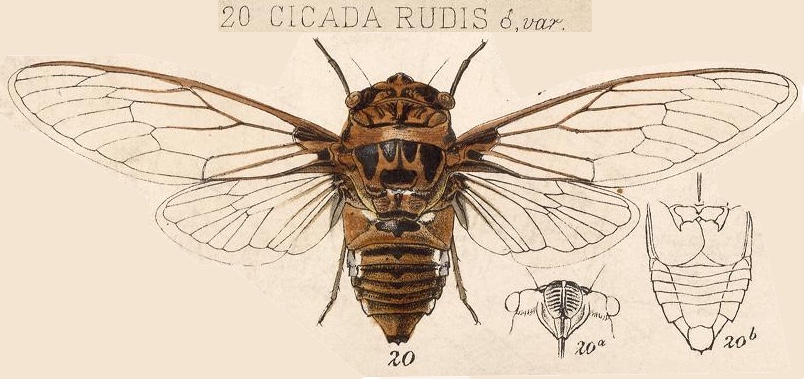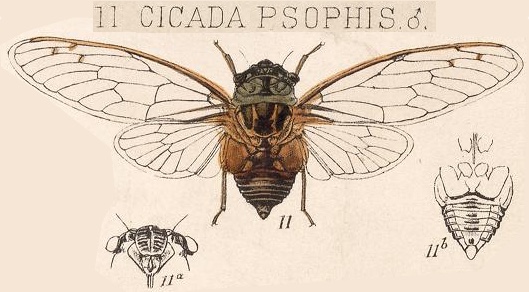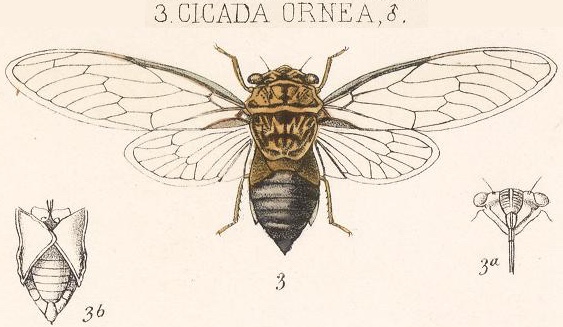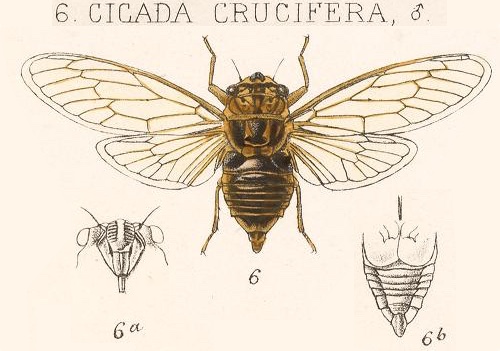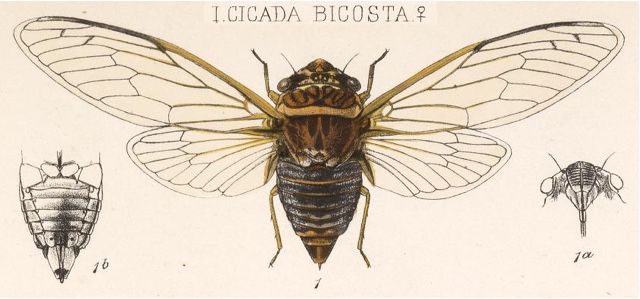Some people hear a cicada sing, and hear a beautiful song, while others hear an irritating noise. But how do they create the sounds?

The ridged organ in this photo is a tymbal, the organ male cicadas use to create their songs.
Cicadas make sounds in quite a few ways: with tymbal organs, wing flicks, wing clicks, and stridulations.
Male cicadas sing using their tymbals

Muscles tug at it rapidly to create sound vibrations.
Cicadas are best known for the songs the male cicadas sing. They sing using special organs called tymbals. Tymbals are membranes that vibrate very quickly when pulled by tiny muscles. This vibration creates the cicada’s song. Some types of cicadas have exposed tymbals, like Magicicada or Zammara. Some species have hidden tymbals, like Neotibicen, and flex their abdomen to open their tymbal covers to modulate their song.
Each type of song made with tymbals has a different purpose:
- Alarm/distress calls: “don’t eat me! something is eating me!”
- Pre-calls: warming up
- Calls to attract mates and establish a territory
- Courting calls: calls made once a mate is found.
- Choruses: when males synchronize their calls to establish chorusing centers and attract females.
Wing flicks and stridulations
Females and males of some species flick their wings to produce a sound similar to the flick of a wall switch. Females use wing flicks to respond to male courting calls, in the case of Magicicada periodical cicadas. Some males of other species use a combination of tymbal song and wing flicks.
Some species of cicadas lack tymbals, like cicadas belonging to the genus Platypedia. They use their wings to make crackling or popping noises known as crepitation. Amphipsalta zelandica of New Zealand use wing-clicks to communicate.
Stridulations: Some cicadas, like Australia’s Green Grocer, possess raspe-like parts of their bodies which when stroked with part of a wing produces yet another type of cicada sound. This type of sound is called a stridulation.
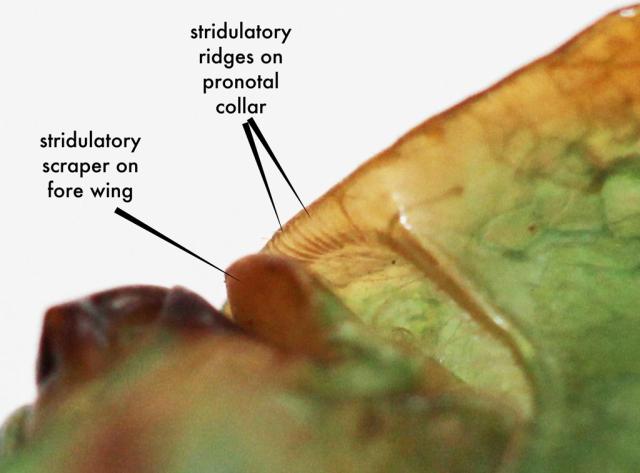
Tettigarcta vibrate the earth
Lastly, some species like those belonging to the genus Tettigarcta vibrate the substrate (soil, plant matter, etc) they live in, rather than vibrating the air.
